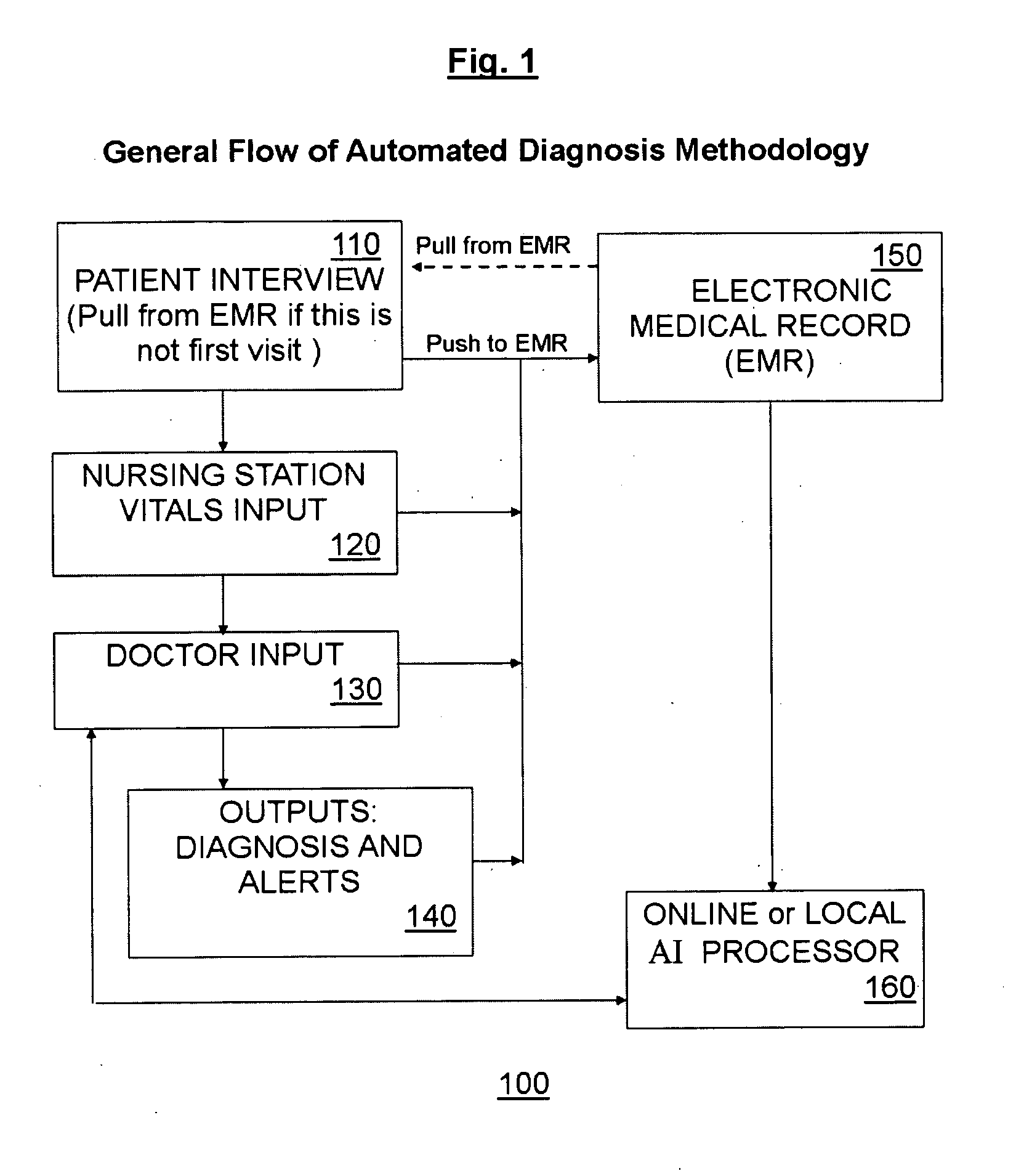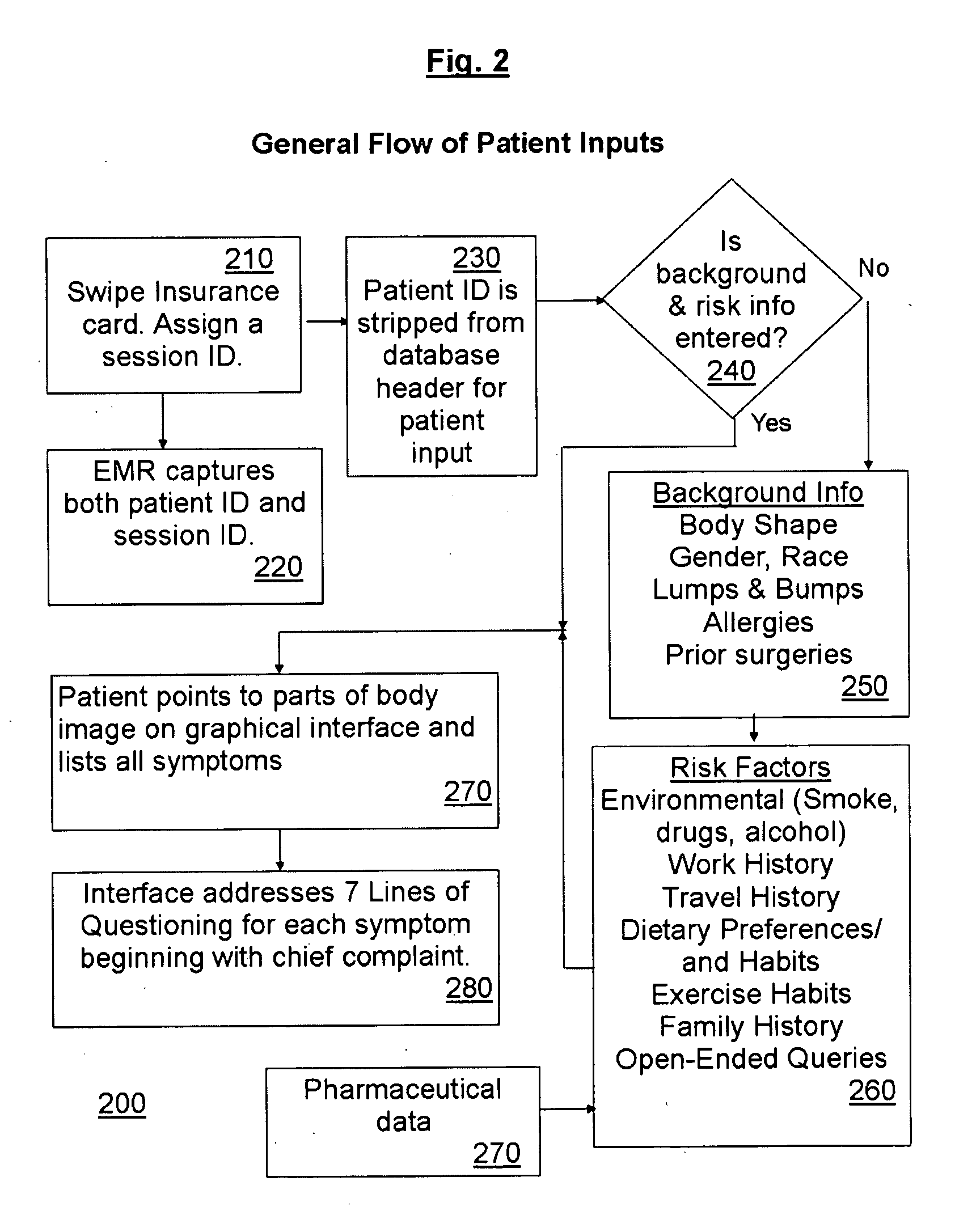Method and apparatus for automated differentiated diagnosis of illness
a technology of illness and diagnosis, applied in the field of medical diagnosis, can solve the problems of slow and expensive process implementation, loss of productivity, drug and treatment costs, etc., and achieve the effects of rapid diagnosis of medical conditions, immense predictive value of invention, and meaningful and accurate diagnosis
- Summary
- Abstract
- Description
- Claims
- Application Information
AI Technical Summary
Benefits of technology
Problems solved by technology
Method used
Image
Examples
Embodiment Construction
[0024]Referring now to the drawings, wherein like reference numerals designate identical or corresponding parts, and more particularly to FIG. 1 thereof, there is illustrated an overview of a diagnostic process (100) which includes the collection of patient inputs (110), a series of nurse inputs (120), a series of doctor inputs (130) and diagnostic outputs, alerts and treatments (140), a series of pattern recognition computations (neural network(s)) that occur either locally or remotely (160). Each of the input steps also feeds into a hospital's electronic medical records (150).
[0025]While the diagnosis of the potential of a particular illness is established using statistical pattern recognition techniques inherent in the neural network, there is also a physical basis for changes in the potential of an illness. The human body can be thought of existing in a metastable state and the presence of a risk factor acts to increase the stress on that point thereby causing a mutation, lapse ...
PUM
 Login to View More
Login to View More Abstract
Description
Claims
Application Information
 Login to View More
Login to View More - R&D
- Intellectual Property
- Life Sciences
- Materials
- Tech Scout
- Unparalleled Data Quality
- Higher Quality Content
- 60% Fewer Hallucinations
Browse by: Latest US Patents, China's latest patents, Technical Efficacy Thesaurus, Application Domain, Technology Topic, Popular Technical Reports.
© 2025 PatSnap. All rights reserved.Legal|Privacy policy|Modern Slavery Act Transparency Statement|Sitemap|About US| Contact US: help@patsnap.com



